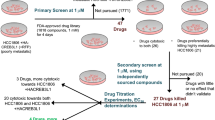Abstract
The mechanism of action of the novel heterocycle 3,5-dimethyl-pyrido-1,2,3,5-tetrazepin-4-one (PYRZ), structurally related to temozolomide, was studied in the human ovarian tumour cell line OVCAR-3. Our results showed that, despite its marked structural similarities to temozolomide, PYRZ presents properties that are atypical of 1,2,3-triazene-containing alkylating agents. In a Maxam-Gilbert DNA sequencing assay, PYRZ showed background levels of DNA alkylation, in contrast to temozolomide which strongly alkylated DNA preferentially at guanine residues. At high concentrations, PYRZ inhibited the synthesis of DNA, RNA and protein 3 h after treatment, in contrast to temozolomide which, in previous work, was found to preferentially inhibit DNA synthesis in OVCAR-3 cells. In cells exposed to PYRZ, alkaline sucrose density-gradient centrifugation showed a dose-dependent increase in DNA fragmentation only 12 and 24 h after treatment. PYRZ induced increasing accumulation of cells in late S and G2+M 6-24 h after treatment. This also contrasts with previous work that showed delayed cell cycle arrest induced by temozolomide in OVCAR-3 cells and in the murine leukaemia L1210 cells. Cell-killing kinetics by PYRZ showed a series of sigmoidal dose-response curves with 50-90% cell killing attained as early as 24 h after treatment in the 25-100 microM dose range. (IC50 clonogenic assay 18 microM). The results suggest that the mechanism of cell killing by PYRZ may be different from that of its parent drug temozolomide, and other alkyl-triazene-containing molecules of the same class.
This is a preview of subscription content, access via your institution
Access options
Subscribe to this journal
Receive 24 print issues and online access
$259.00 per year
only $10.79 per issue
Buy this article
- Purchase on Springer Link
- Instant access to full article PDF
Prices may be subject to local taxes which are calculated during checkout
Similar content being viewed by others
Author information
Authors and Affiliations
Rights and permissions
About this article
Cite this article
Jean-Claude, B., Mustafa, A., Cetateanu, N. et al. Design and mechanism of action of a novel cytotoxic 1,2,3-triazene-containing heterocycle, 3,5-dimethyl-pyrido-1,2,3,5-tetrazepin-4-one (PYRZ), in the human epithelial ovarian cancer cell line NIH:OVCAR-3 in vitro. Br J Cancer 76, 467–473 (1997). https://doi.org/10.1038/bjc.1997.411
Issue Date:
DOI: https://doi.org/10.1038/bjc.1997.411



